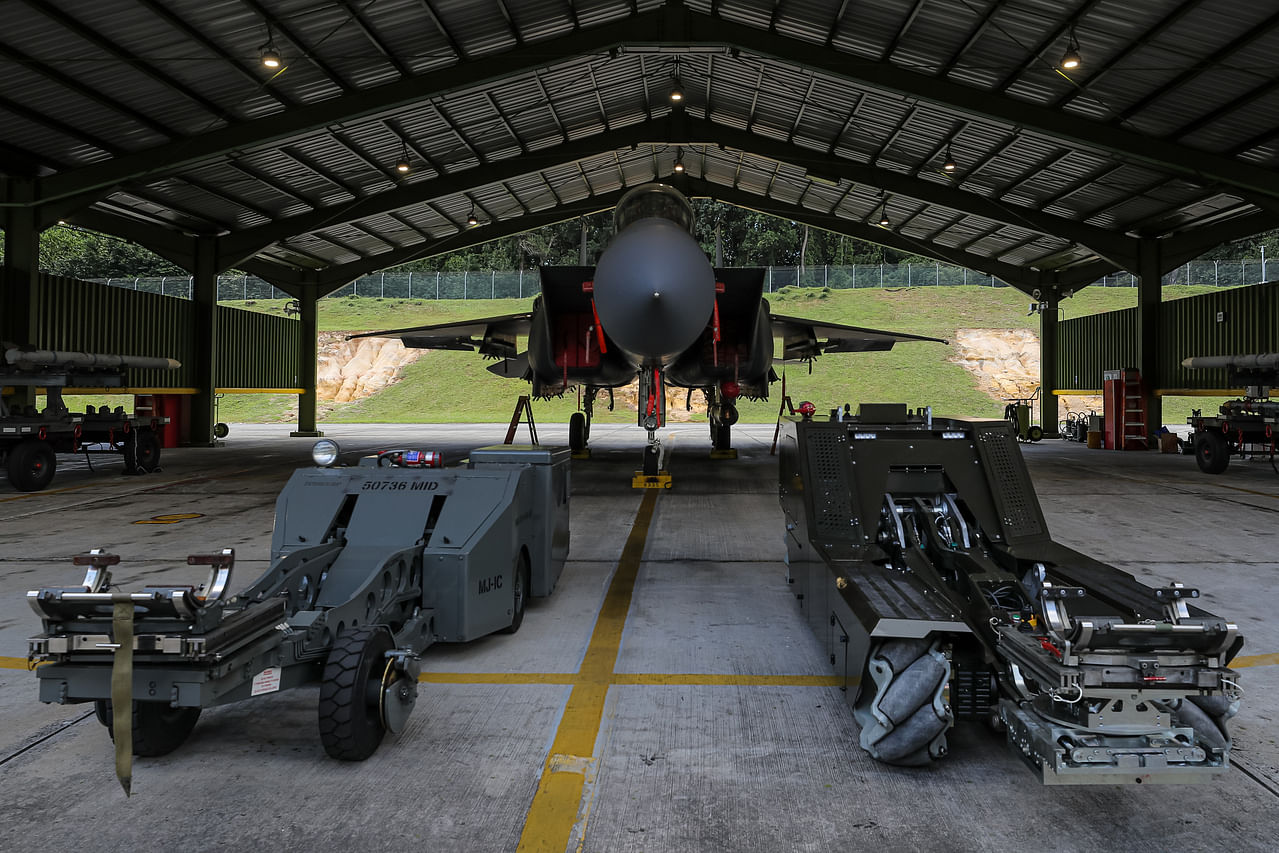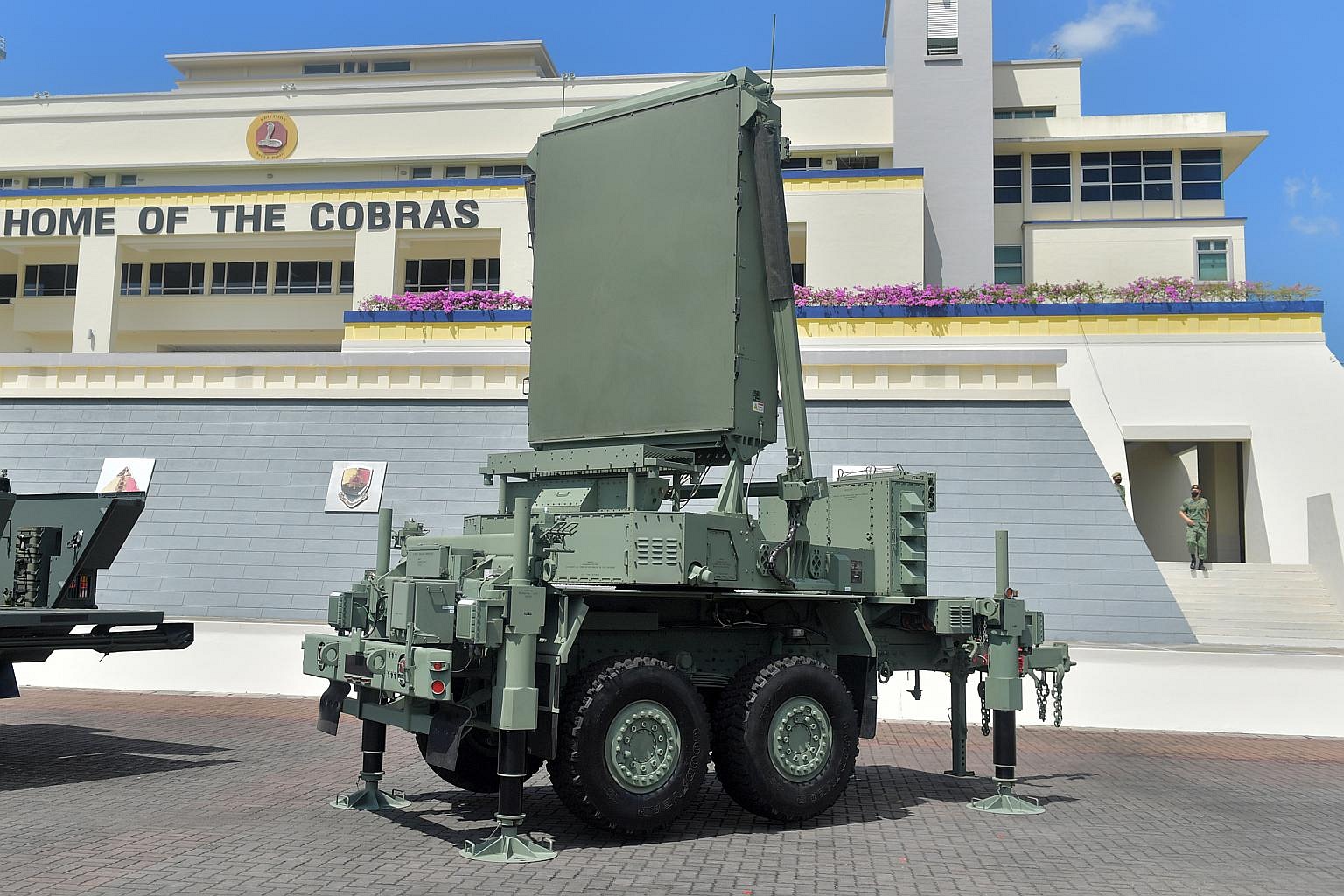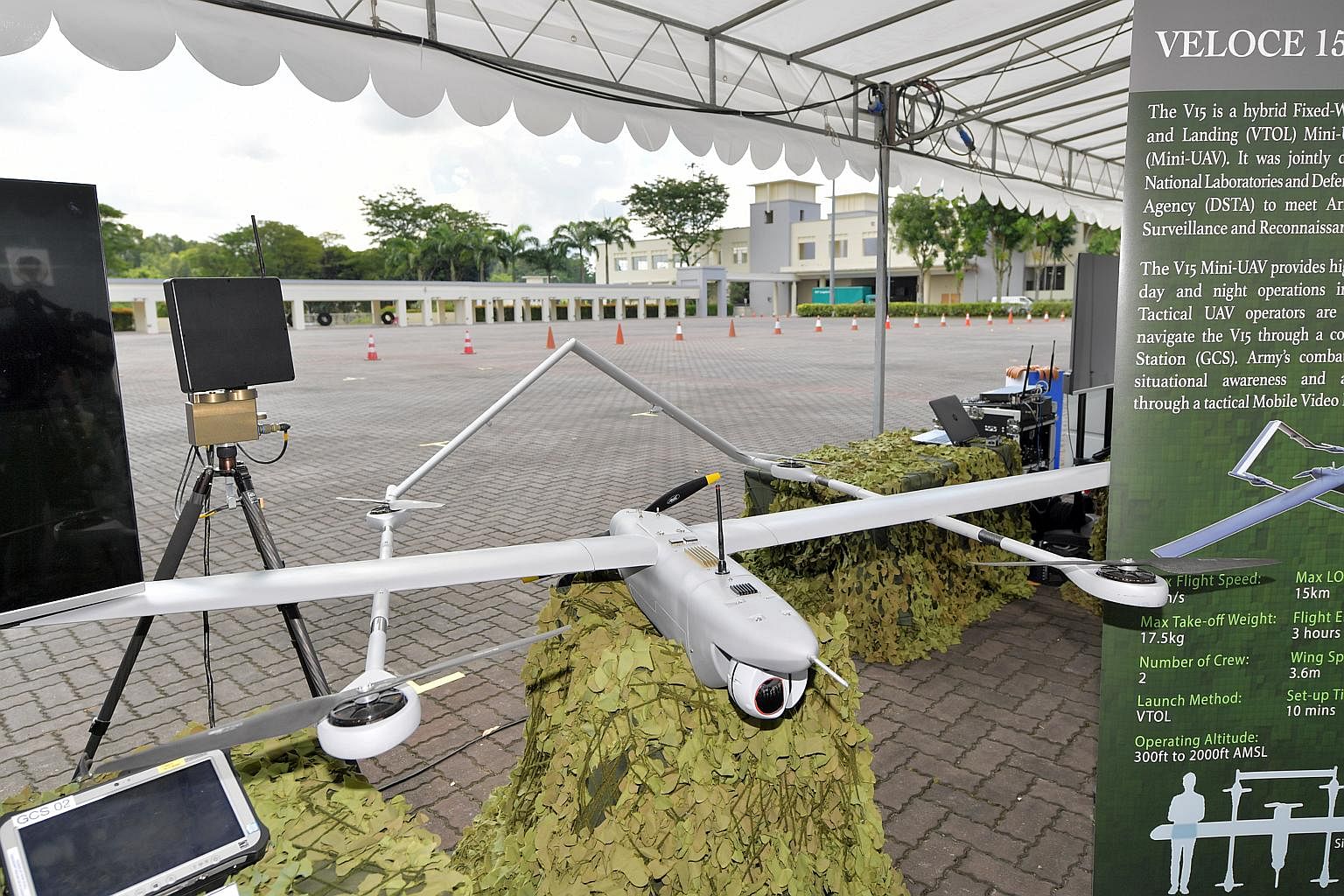Drones to be trialled to patrol RSAF airbase perimeters, can detect and track intruders
Sign up now: Get ST's newsletters delivered to your inbox
Follow topic:
SINGAPORE - Drones could be used in the future to patrol airbase perimeters to detect intruders and suspicious activities.
These drones - which the Republic of Singapore Air Force (RSAF) plans to trial - will be capable of identifying and tracking targets through video analytics.
A live video feed from the drones provides a real-time situational picture to security troopers, who are on standby to deal with intruders.
Multiple self-organised drones are also being tested at Paya Lebar Airbase to reduce the manpower and time taken for runway damage assessments. With artificial intelligence, they are able to detect and classify the extent of a runway's damage, such as the size of a crater.
The RSAF shared updates on unmanned technologies as part of its "smart" airbase concept last week, ahead of SAF Day on Thursday (July 1).
Colonel Mark Lim, who is commander of Paya Lebar Airbase, told reporters the RSAF is taking steps to be future-ready through Smart Airbase developments.
"By tapping Fourth Industrial Revolution technologies, we plan to position the air force to operate in a high-tempo and highly complex environment.
"Specifically, we are looking to exploit advances in robotics, data analytics and artificial intelligence to deliver air power in a more dynamic and efficient manner."
Trials are being conducted using commercial off-the-shelf autonomous vehicles to transport supplies and personnel within Paya Lebar Airbase.
Another innovation is an improved munitions loader for fighter aircraft, which is expected to be deployed for operations this year.
The new loader reduces the manpower and time required to arm the RSAF's fighter aircraft. It needs only one person to operate, compared with three previously, and has omni-directional wheels to make movement more precise.

ST PHOTO: GAVIN FOO
PHOTO: ST

ST PHOTO: GAVIN FOO
PHOTO: ST
Meanwhile, the next-generation Singapore Army will further use technology to achieve a force multiplier effect, and fight at a faster tempo to achieve its operational outcomes, said Assistant Chief of the General Staff for Plans, Colonel Xu Youfeng.
The army of the future will also "think and act faster", with the use of data analytics and artificial intelligence, as it seeks to face a more diverse array of threats and operational demands.
This is while having a shrinking pool of enlistees, Col Xu said.
He was speaking at a media briefing on Monday at Mandai Hill Camp, where two new army "sense and strike" capabilities were commissioned.
The newly commissioned TPQ-53, a weapon-locating radar with improved range and automation, will replace the current fleet of TPQ-36, in service since 1986, and TPQ-37, in use since 1991.

The new TPQ-53 radar can detect rocket, artillery, and mortar threats in a fixed scan direction up to 60km away.
ST PHOTO: ALPHONSUS CHERN
The new radar can detect rocket, artillery and mortar threats in a fixed scan direction up to 60km away - 10km farther than its predecessors.
An advanced mortar system mounted on a protected combat support vehicle was also commissioned. The Belrex Protected Combat Support Vehicle (Mortar) can deploy 80 per cent faster than its predecessor and offers a 67 per cent higher rate of fire.
A locally developed mini-unmanned aerial vehicle (UAV) - the Veloce 15 - was also unveiled.
It will replace the Skyblade III that has been in use since 2010. It can be operated remotely up to a range of 15km from its control station on the ground, which is 87 per cent farther as compared with the Skyblade.
It can also be launched from the rear area of manoeuvre units, with reconnaissance forces at the front lines taking over the UAV mid-flight. This reduces the load carried by front-line forces, who can then operate more stealthily.

The locally developed Veloce 15 mini UAV will be replacing the Skyblade III that has been in use since 2010.
ST PHOTO: ALPHONSUS CHERN
These new systems are part of the army's latest "sense and strike" capabilities - which allow more dynamic army operations to be supported, said Col Xu.
To develop new operating concepts, the Headquarters Sense and Strike was inaugurated in November last year. This was a reorganisation of HQ Army Intelligence and HQ Singapore Artillery under 6th Division.
"The establishment of HQ Sense and Strike will move beyond the Third-Generation Army concept of precision fires, towards achieving precision effects at a higher volume and at a faster speed," added Col Xu.


